Review| The Peanuts Movie: Character Counts (Even for a Blockhead)
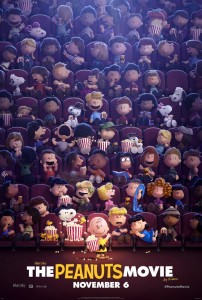 The Peanuts characters have always been part of my life. I remember learning to read while reading the Peanuts strips with my grandmother. The stories were simple, thoughtful and hilarious. But the thing that I admired about them the most was their sincerity. Charles Schulz had a unique sense of the human condition, which he conveyed brilliantly in his comic strips.
The Peanuts characters have always been part of my life. I remember learning to read while reading the Peanuts strips with my grandmother. The stories were simple, thoughtful and hilarious. But the thing that I admired about them the most was their sincerity. Charles Schulz had a unique sense of the human condition, which he conveyed brilliantly in his comic strips.
The Peanuts Movie carries on Schulz’s creative legacy, to a point. It’s a very sincere film, much like its source material. It definitely has the Schulz magic. I can tell that every frame was poured over to be a faithful recreation of original Peanuts animation director Bill Melendez’s classic TV specials and features, albeit using the medium of computer animation.
It’s wonderful to watch the Peanuts gang in the antics to which the public is accustomed. It’s like a big, warm blanket that just makes one feel good watching it. And I am glad the characters are back in the public consciousness, touching a new generation.
However, the film’s biggest flaw (to take a phrase from the source material) is its wishy-washyness when it comes to the classic tropes of Peanuts, and unnecessarily bending them to a more modern sensibility. I could tell from a few creative decisions that the filmmakers had a hard time figuring certain things out.
Regardless, the film’s heart is definitely in the right place, and conveys some very profound themes about life, as did Schulz and his strips. It’s a reminder that we connect with Charlie Brown because we sometimes feel like him, and we want to be reassured that we are adequate enough to be loved.
Good grief! SPOILERS AHEAD!
What Blue Sky has done to recreate the classic Peanuts animated look and feel in computer animation is deserving of high praise. The designers understood that there was character in Schulz’s pen lines, and that they needed to be transferred whenever possible to the CGI versions. In the clip below of the classic football gag, even the effects lines and word-sounds from the comics are used and really work in this new environment.
The animators did right by Bill Melendez in studying what came before to get the proper character movement for this film. Director Steve Martino insisted that the characters be animated “on the twos,” or every second frame (animation is accomplished with 24 separate poses per second). This creates slightly stilted, blocky movement that mimics Melendez’s mid-century style. It’s brilliant – a near-perfect marriage of the slickness of CGI and the organic quality of hand-drawn animation.
What CGI has also given the Peanuts gang to marvelous effect is texture. Their shirts, shoes, hair and everything else are given a certain degree of physical substance that was either not possible or undesirable in the hand-drawn medium. I liked it…a lot.
The Peanuts Movie just generally looks gorgeous. Its attitude is plastered all over the backgrounds and set design. It’s just so happy and cheery, even in scenes like the Red Baron sequence that have a tinge of danger and despair. The layout and design seem to reassure the viewer that everything will be okay, again with the “warm hug” effect.
The character voices, for the most part, are wonderful. Several feel like “professional” kid actors, but the majority sound like normal kids, which was a hallmark of Peanuts animation (and was quite revolutionary when Melendez first attempted it). And it just thrilled me that they brought back the late Bill Melendez himself, via archival audio, as the voices of Snoopy and Woodstock. It was one of those touches for which I cannot thank the filmmakers enough.
Even though Steve Martino and his creative team (which included two of Charles Schulz’s sons co-writing the screenplay) were diligent in their preservation of the Peanuts animation legacy and Schulz’s storytelling sensibilities, there were several things that were glaringly odd about their take on the characters. They were things that repeatedly took me out of the film, and things I believe were changed to appeal to today’s audience. Sigh.
Just as important as Schulz’s art was his rich prose, which was sorely lacking in this film. His writing style was distinct and very intelligent. The juxtaposition of such deep, philosophical, and emotionally honest thoughts coming out of children is a huge part of what made Charlie Brown and his friends so charming.
“I almost wish there wasn’t a holiday season. I know nobody likes me. What do they have to have a holiday season to emphasize it?” Charlie Brown, upon receiving no Christmas cards (A Charlie Brown Christmas)
There was a huge vocabulary to Schulz’s work, including historical and literary references, that made the strips informative and interesting. I can’t remember how many times as a kid I had to research a word or event Schulz mentioned in the strip or cartoons, and I think it made me into a more keen learner. Most of these ideas usually came out of the cartoon mouth of Linus, Charlie Brown’s best friend. Linus and his sage advice was noticeably absent from a good portion of the film, and these little tidbits went with him.
I would hate to think that Martino, the Schulzs and Cornelius Uliano dumbed down the prose to appeal to the “quick cut” generation (which sadly says a lot about modern society), but it did seem to be that way. I found myself comparing in my mind the simplicity of many of the lines in the film to the wonderful complexity inherent in Schulz’s lines. The only times that the film went back into smart writing is when a sequence relied heavily on the source material, such as the above mentioned football sequence.
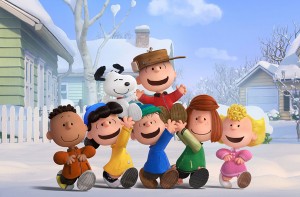 One other historic Peanuts element that was sorely missing was the light, contemporary jazz soundtrack. Christophe Beck’s score for The Peanuts Movie wasn’t terrible; it just wasn’t appropriate for the subject matter. Beck’s music is symphonic and busy, even bombastic at times. In fact, the only place I felt Beck’s score was properly utilized was during Snoopy’s grand fantasies about the Red Baron. Those sequences deserved a powerful, triumphant score and it was used to much better effect.
One other historic Peanuts element that was sorely missing was the light, contemporary jazz soundtrack. Christophe Beck’s score for The Peanuts Movie wasn’t terrible; it just wasn’t appropriate for the subject matter. Beck’s music is symphonic and busy, even bombastic at times. In fact, the only place I felt Beck’s score was properly utilized was during Snoopy’s grand fantasies about the Red Baron. Those sequences deserved a powerful, triumphant score and it was used to much better effect.
Original Peanuts composer Vince Guaraldi’s more famous tracks are used sparingly in the new film, but it creates a musical clash of styles. After the film was over, my wife remarked that she would get all nostalgic when a Guaraldi composition began, only to have it prematurely cut off and the symphonic score resume.
What Vince Guaraldi accomplished in the animated specials was musically matching the sophisticated simplicity of the animation and script. It was a harmonious trifecta of talent. The composers that wrote music for the Peanuts specials after Guaraldi’s untimely death in 1976 still retained his style for the most part, but enhanced it to reflect popular taste at the time of production (such as adding a saxophone into the musical mix for the specials created in the 1980s).
The most peculiar break from Peanuts conventions was the film’s “B” storyline with Snoopy’s World War I Flying Ace engaging the Red Baron. In previous incarnations, the aerial adventures are all in Snoopy’s head, and it was left to the imagination of the viewer to picture the plucky beagle flying his Sopwith Camel biplane, as seen in this clip from It’s the Great Pumpkin, Charlie Brown:
What made this sequence so interesting were its limitations. Melendez was no doubt strapped with a tiny budget for the specials like Great Pumpkin, but he made the sequence work to great effect using backgrounds, color shading and sound effects. The audience was almost invited to play along in the adventure. Also to note is that the bottom of Snoopy’s doghouse is never shown, and it’s unclear whether the structure even leaves the ground – adding to the imagination angle.
In The Peanuts Movie, Snoopy’s Flying Ace fantasies are brought to stunning life. Because of the advancements in animation, the audience can now see what Snoopy sees in his head, literally flying over the French countryside after his nemesis. The problem is that while everything in the fantasy looked real, Snoopy’s Sopwith Camel was still a doghouse! Moreover, the use of gunfire that was seen was extremely limited throughout the entire sequence (though modern trepidation toward firearms may be the culprit here).
It was a wonderful idea that we would finally see a fully-realized dogfight between Snoopy and the Red Baron, with the lovely Fifi in certain peril. But if you’re going to do it, go all the way with it. It was awkward seeing these fully-rendered, realistic biplanes (with very real physical attributes) and Snoopy’s doghouse flying at the same time. If it was truly Snoopy’s fantasy realized, the doghouse would also be a plane!
Themes and Thoughts
In an episode of This is America, Charlie Brown, Peppermint Patty describes the titular “blockhead” in a very profound way:
“[Charlie Brown] doesn’t always do the right thing, and I can still strike him out in three pitches… I’ve got to hand it to him, he keeps on trying. He doesn’t give up. He just keeps plugging away.”
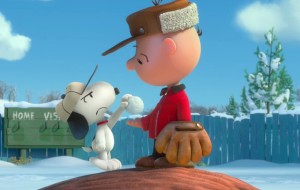 What has made Charlie Brown popular hasn’t been his failures, but his character – his ability to keep trying and always hoping for the best. Though his peers push him around and tease him throughout the entire history of the Peanuts property, they still respect Charlie Brown for the strength of his character. This idea of character is at the center of The Peanuts Movie, and makes for a strong and satisfying theme.
What has made Charlie Brown popular hasn’t been his failures, but his character – his ability to keep trying and always hoping for the best. Though his peers push him around and tease him throughout the entire history of the Peanuts property, they still respect Charlie Brown for the strength of his character. This idea of character is at the center of The Peanuts Movie, and makes for a strong and satisfying theme.
The movie’s overall storyline is Charlie Brown’s quest to win the affections of the Little Red-Haired Girl (a trope brilliantly taken directly from the strip). Charlie Brown seems to take advice from everyone and tries many different stunts to get the Little Red-Haired Girl to notice him.
What he didn’t realize was that it wasn’t the big stunts or his resulting newfound celebrity that made the Little Red-Haired Girl turn her head and pick Charlie Brown as a summer pen pal. In a fit of bewilderment, Charlie Brown asks the Little Red-Haired Girl why she picked him:
Little Red-Haired Girl: “That’s easy. It’s because I admire the type of person you are.”
Charlie Brown: “An insecure, wishy-washy failure?”
Little Red-Haired Girl: “That’s not who you are at all.”
The Little Red-Haired Girl went on to explain all the little things she saw that gave her an idea of who Charlie Brown was as a person, like botching his talent show act to save his sister Sally from humiliation, or throwing away his newfound celebrity by admitting that the perfect score on his test was a mistake.
That exchange at the end was an emotional one for me. It brought both my wife and I to tears. As we left the theater, she tearfully told me, “You know that’s how I think of you, right?” I nodded, holding back tears of my own. That notion of loving someone despite their faults is one of the core truths of marriage. I know that I sympathize with Charlie Brown. I’ve had my share of days that I fall short. But knowing that I have someone who loves me and will love me no matter what is very comforting.
“For great is Your love toward me; You have delivered me from the depths, from the realm of the dead.” -Psalm 86:13
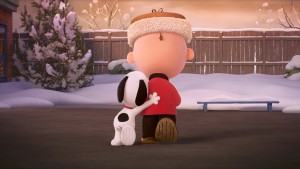 This theme also made me think beyond my own marriage and to my relationship with God. The unconditional love found in strong marriages is a direct parallel to our relationship with God Himself. The Book of Ephesians even describes the Church’s relationship with Christ as that of a bride and bridegroom (22-33). But God’s love is greater than any love on this earth, for it is perfect, complete, all-encompassing, and relentless.
This theme also made me think beyond my own marriage and to my relationship with God. The unconditional love found in strong marriages is a direct parallel to our relationship with God Himself. The Book of Ephesians even describes the Church’s relationship with Christ as that of a bride and bridegroom (22-33). But God’s love is greater than any love on this earth, for it is perfect, complete, all-encompassing, and relentless.
It was God who chose to look past our faults and see us for who we are, for the character we could have with Him. We are His masterpiece (Ephesian2:10), and therefore are loved endlessly. God’s love for us even went to the point of sacrificing Himself so that we could be with Him.
Why did God choose you? Because He loves you, you are His creation, and He has wonderful plans for you.
Conclusion
The Peanuts Movie is definitely one of my favorite films of the year. It’s a fitting tribute to Charles Schulz’s deceivingly simple comic strips and Bill Melendez’s animation, for the most part. I sincerely hope that in the sequel (and I hope there is one), the creative team will learn to fully embrace Schulz’s sensibilities if for no other reason than to enhance what they already have.
Just like Charlie Brown, we all are looking for acceptance and love. There are times in our lives when we feel like inadequate failures. But we shouldn’t look to the world to provide what we seek. We have a God that loves us so much that He can look past our messy lives and see us for who we were meant to be.


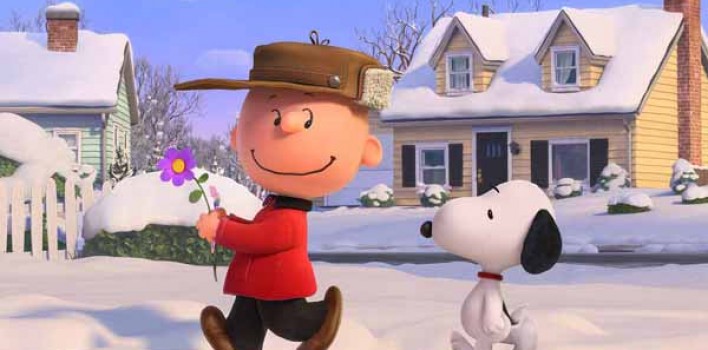
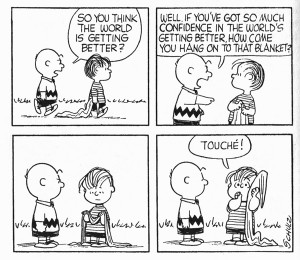
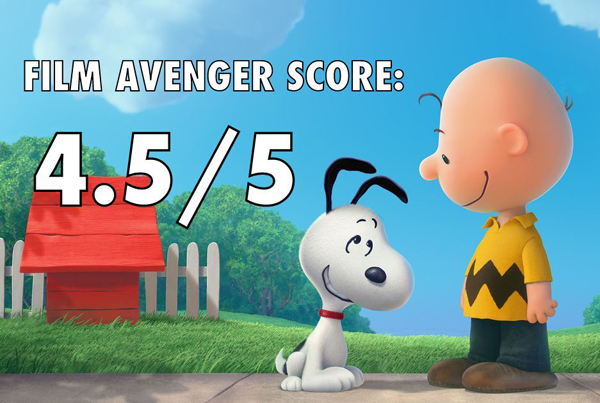
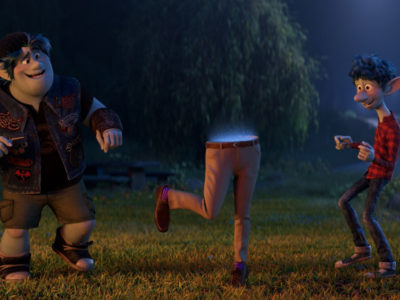
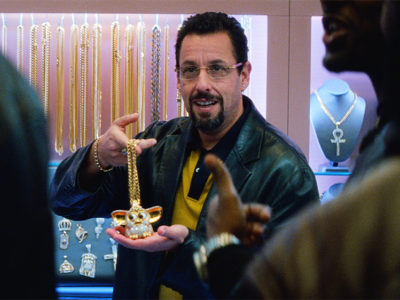
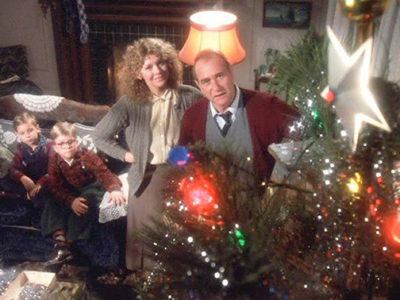


Pingback: 50 Years of A Charlie Brown Christmas | Reel World Theology
Pingback: RWT Top 20 Films of 2015: 15-11 | Reel World Theology